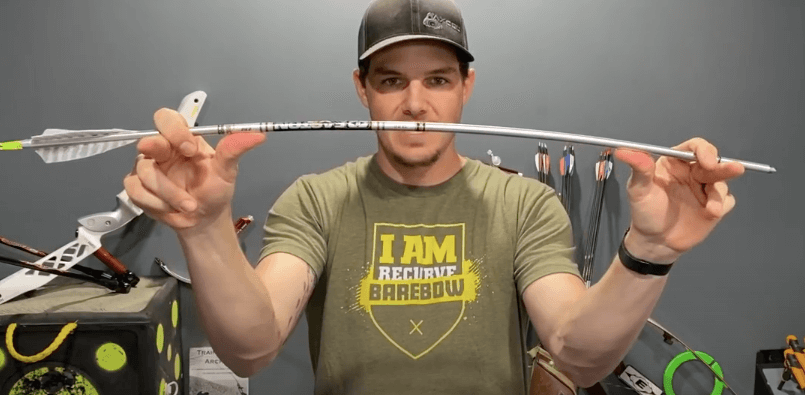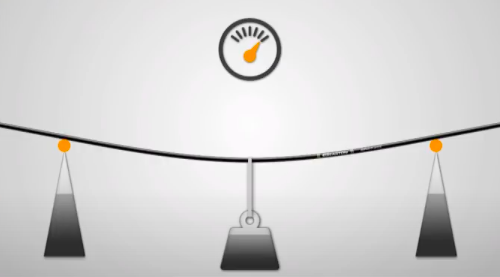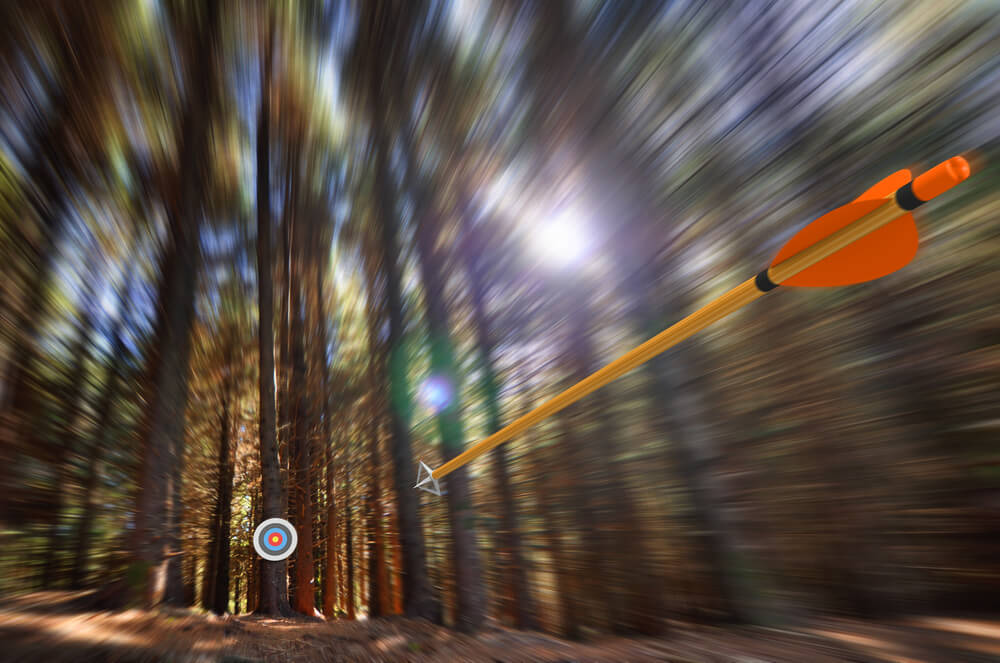Are you new to archery and struggling to achieve consistent accuracy with your recurve bow? Or maybe you’ve been shooting for a while but noticed that your arrows have a tendency to veer left or right. If this sounds familiar, it’s possible that you have a weak recurve arrow spine. So what exactly is a weak recurve arrow spine?
In simple terms, the arrow spine refers to the stiffness of the arrow shaft. A weak spine means that the shaft is too flexible for the bow’s draw weight, causing it to bend excessively during flight.
This can lead to inconsistent grouping and inaccurate shots. The good news is that fixing a weak recurve arrow spine is relatively easy and can greatly improve your accuracy and consistency on the range or in the field.
To strengthen a weak recurve arrow spine, you can either add weight to the nock end of the arrow, remove weight from the pointed end, cut the arrow shaft shorter, or even reduce the draw weight of the bow.
In this article, we’ll be discussing everything you need to know about diagnosing and fixing this common issue. So grab your bow and let’s get started!

Matching the correct arrow spine to your bow is crucial in achieving your arrow’s optimal performance upon release. In this article, we’ll look at how to strengthen a weak recurve arrow spine in more depth.
How Do I Strengthen a Weak Recurve Arrow Spine?
Taking Gold Tip’s arrow spine chart as a reference, you could make the following changes based on draw weight, and arrow length.
- Reduce Draw Weight
You could try compensating for spine strength by bringing down the draw weight of the bow to meet the spine strength of the arrow. If you had a 50lb bow and your spine was 600, you could reduce it down to a 40lb draw weight with a 25″ arrow length to see if that improved accuracy.
- Shorten Arrow Length
Following Gold Tip again, if you’re shooting Recurve, when you’re bare-tuning your arrow shafts, measure out your full draw length. Get a friend to mark the arrow where it meets the outside of the riser.
Then start with the arrow 1″ longer than your intended finished arrow. Begin cutting the arrow shaft down by 1/4 ” at a time until you get the best tune possible.
- Reduce Arrow Point Weight
To tune the arrow spine strength based on point weight, it’s best to shoot a group of arrows first. Based on the kind of groupings you get, you can choose to reduce the point weight of the arrows to see if it improves the spine.
A 150-grain point might be drawing the arrows to the right, whereas reducing to a 120-grain point may bring the arrows back on target.
Understanding Arrow Spine
Arrow spine, also known as dynamic spine, is the measurement of an arrow’s stiffness. It refers to how much the shaft will bend when force is applied to it. A higher number indicates a stiffer arrow and a lower number indicates a more flexible one.
Having the correct arrow spine is essential for accuracy and consistency in archery. If your arrow spine is too weak, it will not fly straight and can cause inconsistencies in your shot grouping.
Definition of Arrow Spine
The definition of arrow spine is basically how much the arrow flexes when you shoot it out of your bow. This flexing action can be influenced by many factors such as draw weight, arrow length, point weight, temperature, humidity or even altitude changes. Arrow manufacturers measure the stiffness of their arrows using different methods.
The “deflection” method measures how many inches an unsupported section of the shaft deflects under a certain amount of pressure. The “static” method involves hanging weights from the centre of an unsupported section until it bends to a certain degree.
Factors that Affect Arrow Spine
The three main factors that affect arrow spine are draw weight, arrow length, and point weight:
- Draw weight: the amount of force required to pull back the bowstring affects how much an arrow will bend upon release.
- Arrow length: longer arrows may have weaker spines due to more bending occurring along its length.
- Point weight: the heavier your point (the sharpened tip at the front), the stiffer your arrows need to be in order to maintain accuracy because heavier points add more stress on weaker spine arrows.

It needs to be noted that there are two different classifications of arrow spine:
- Static Spine
This is the spine measurement as set by the manufacturer. This is the rating is printed onto the arrow shaft and the number listed on the arrow spine chart.
- Dynamic Spine
Dynamic spine is how the arrow performs once it’s left the bow.
The static spine of the arrow won’t change, but the dynamic spine is affected by factors like arrow length, draw weight, draw length and point weight.
The number is calculated in 1000ths of an inch. So an arrow that has a deflection of 500,000ths of an inch (1/2 an inch) is classed as a 500 spine arrow. Generally speaking, the higher the number, the weaker the spine.
Arrow manufacturers provide recommendations for which spine works best for which draw weights, point weight and arrow length as all three factors will affect the arrow’s flex.
Related: What Is The Best Brace Height For A Recurve Bow?
Signs of a Weak Recurve Arrow Spine
So you’ve been practising archery with your recurve bow and arrows, but something seems off. Your grouping is inconsistent, and some of your arrows are hitting left or right instead of straight on.
These are signs that you may have a weak recurve arrow spine. It’s important to diagnose the issue before attempting to fix it.
Otherwise, you may end up making more adjustments than necessary or even causing more harm than good. Knowing the signs of a weak recurve arrow spine can help in identifying the problem accurately.
The most common sign of a weak recurve arrow spine is inconsistent grouping. If your arrows are all over the place, rather than tightly grouped together, then this indicates that there is an issue with your arrow’s spine.
Another sign is when your arrows hit left or right instead of dead-on target. This can be frustrating and lead to poor accuracy and consistency.
How to Diagnose a Weak Recurve Arrow Spine
Now that you know the signs to look out for, let’s talk about how to diagnose a weak recurve arrow spine. The easiest way to do this is through bare shaft tuning.
Bare shaft tuning involves shooting one bare (without fletching) arrow alongside fletched arrows from a specific distance and analyzing their grouping patterns. If the bare shafts consistently group away from the fletched ones, then it’s an indication that there’s something wrong with your arrow’s spine.
You can also use paper tuning as another diagnostic method. Paper tuning involves shooting an arrow through paper and analyzing its pattern of tears on exit through the other side of the paper target.
If the tears indicate tail-left or tail-right directions, then this means that there might be an issue with your bow’s tune or even its rest. However, if the tear is vertical, then it’s an indication of a weak recurve arrow spine.
If weight is added at the nock end of the arrow, it doesn’t cause an increase in shaft flexing. But it does slow the acceleration of the arrow down.
This causes less flex as the arrow acceleration is now lower due to an increase in arrow weight at the nock end.
That’s how adding weight at the nock end serves to increase the dynamic spine of the arrow.
Fixing the Weak Recurve Arrow Spine
Adjusting Draw Weight: Finding the Sweet Spot
One of the biggest factors that affect arrow spine is draw weight. Simply put, draw weight is the amount of force required to pull back a bowstring to its full extent.
A higher draw weight means more force, which in turn leads to a stiffer arrow spine. Adjusting your recurve bow’s draw weight can help fix a weak arrow spine.
To adjust your draw weight, start by tightening the limb bolts equally on both limbs using an Allen wrench. Depending on your bow model, you might need to either tighten or loosen both bolts.
Make sure that you adjust them in small increments and test shoot after each adjustment until you find the sweet spot with consistent grouping. It’s important to note that increasing the draw weight can cause fatigue and strain on your muscles, so it’s best to find a comfortable balance between stiffness and ease of use.
Adjusting Arrow Length: Getting Your Arrows Just Right
Another factor that affects arrow spine is arrow length. Longer arrows tend to have weaker spines while shorter arrows tend to have stiffer spines.
If your recurve bow’s arrows are consistently too weak, try shortening them. To adjust your arrow length, start by measuring from the nock groove at the end of one of your arrows to the point where it meets with its insert or point.
Then cut off small sections of about 1/8 inch at a time until you reach optimal stiffness for consistent grouping. It’s important not to overdo this process as cutting too much from your arrows can leave them permanently too stiff and unusable.

Adjusting Point Weight: Balancing Your Arrows
The final factor affecting arrow spine is point weight – i.e., how heavy or light an arrow point is. Adding or removing weight from the point of your arrows can help balance out their spine and fix any issues with accuracy and consistency.
To adjust your point weight, start by unscrewing the old points and then attaching new ones with a different weight. The heavier the point, the stiffer your arrow will become.
Conversely, lighter points will lead to weaker spines. It’s important to note that altering your arrow’s point weight can also change its centre of gravity and affect its flight trajectory.
So, be careful when changing the weight of your arrow points and test shoot after each adjustment to make sure it’s still accurate. By making adjustments to draw weight, arrow length, and point weight in small increments, you can find that perfect balance for a consistent grouping and optimal accuracy with your recurve bow.
Testing the Fixed Arrow Spine
Now that you have fixed your weak recurve arrow spine, it’s time to test if your efforts have paid off. Testing the fixed recurve bow will help ensure accuracy and consistency.
A well-spined arrow will group consistently with others of the same weight and length, it will fly straight towards your target without veering left or right. To test the fixed recurve bow, you need to shoot a few arrows at different distances and record their grouping on a target.
Start by shooting three arrows at 10 yards. Look for any inconsistencies in the grouping, such as arrows hitting too high or too low.
If you notice any inconsistencies, make adjustments to your sight pin and shoot a few more arrows until you get a tight group. Next, move back to 20 yards and shoot another set of three arrows.
Observe the grouping again and make any necessary adjustments to your sight pin or technique. Repeat this process for different distances until you are confident that your arrow spine is perfectly tuned.
The Importance of Consistency
Consistency is key when testing the fixed recurve bow. Make sure that each shot is taken under similar conditions – same stance, anchor point, pressure on the bowstring – so that variations in form do not affect results.
Additionally, try to use consistent equipment throughout testing – same bow, same quiver placement, same release aid if using one – so that equipment differences do not affect results either. If you are finding it difficult to get consistent groups with your newly spined arrows after making all necessary adjustments, don’t get discouraged.
It might take some practice before everything clicks into place perfectly.
Remember: tuning your recurve bow can be an enjoyable exercise in precision for archers of all levels!
Is A Stiffer Arrow Spine Better?
It’s not really a question of what is better. It’s more a question of what is the best arrow spine strength for your set-up. The higher your draw weight, the stiffer your arrow spine needs to be. What is the length of your arrows? How heavy are your points?
Once you’ve got those numbers, you’ll need to head on over to the arrow spine selection chart to see what the manufacturer recommends.
Different manufacturers will use different charts based on their arrows, so make sure you check you have the right chart before you start.
Conclusion
The Importance of Fixing Your Weak Recurve Arrow Spine
A weak recurve arrow spine can significantly impact your accuracy and consistency in archery. It can ruin your shot and throw off your aim. This problem can be caused by various factors such as draw weight, arrow length, and point weight.
However, fixing a weak recurve arrow spine is not that difficult if you know what to do.
You’ll have more accurate shots and better groupings that hold to the target’s centre. This will allow you to shoot with more confidence, resulting in a more enjoyable archery experience.
Keep Practicing
This will help improve your form and technique over time, leading to even better results.
Remember that there is always room for improvement with archery. Fixing a weak recurve arrow spine is an essential step towards improving your accuracy and consistency in archery.
By setting up the correct draw weight, arrow length, and point weight based on your needs as an archer, you can make sure that every shot hits the bullseye each time.

0 Comments